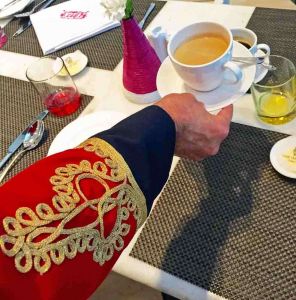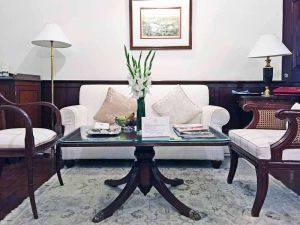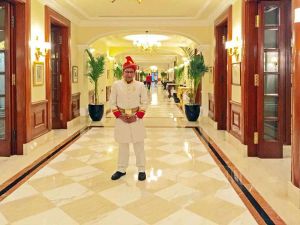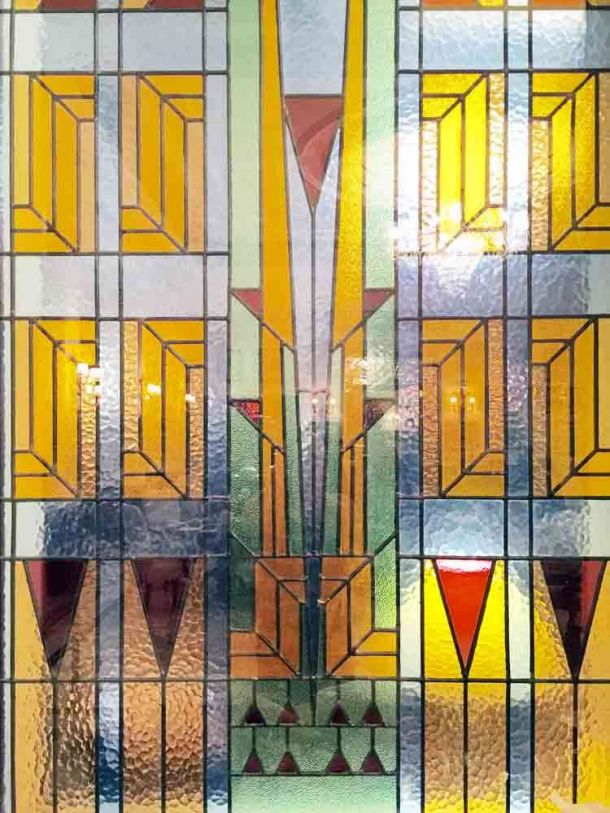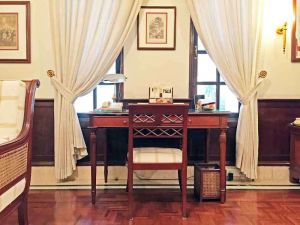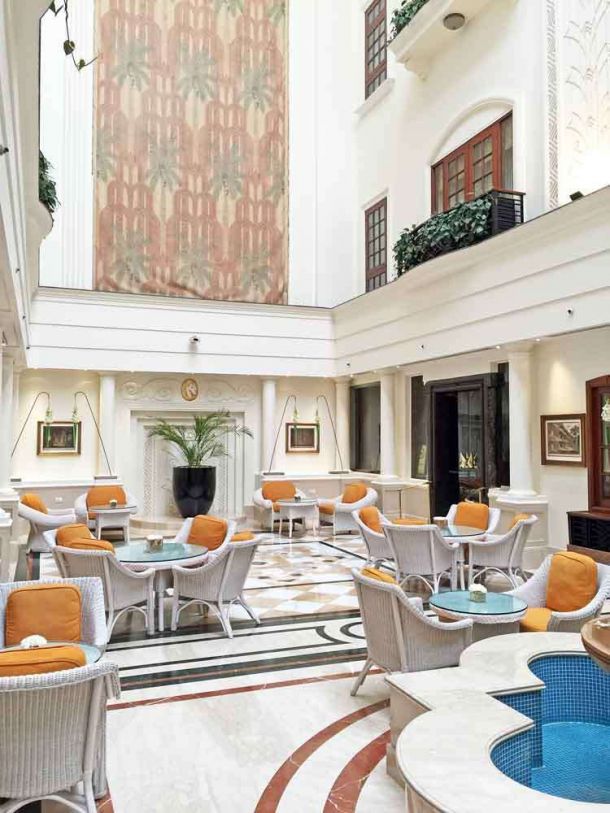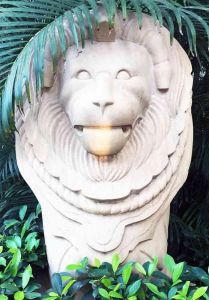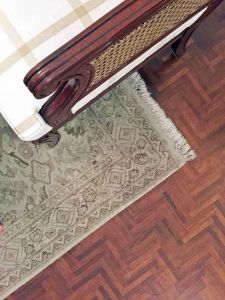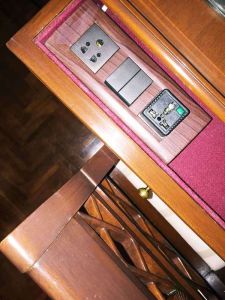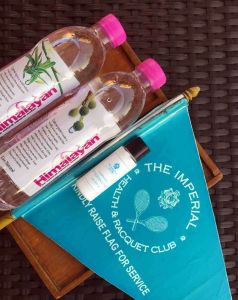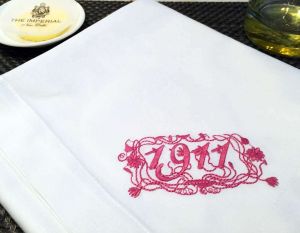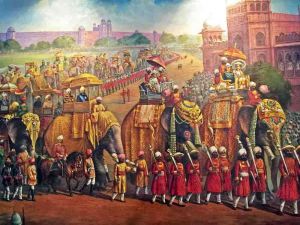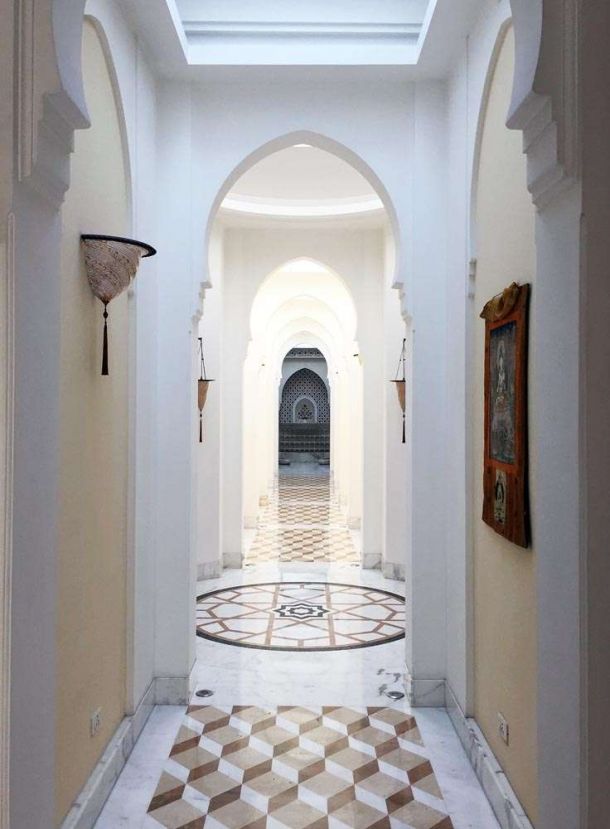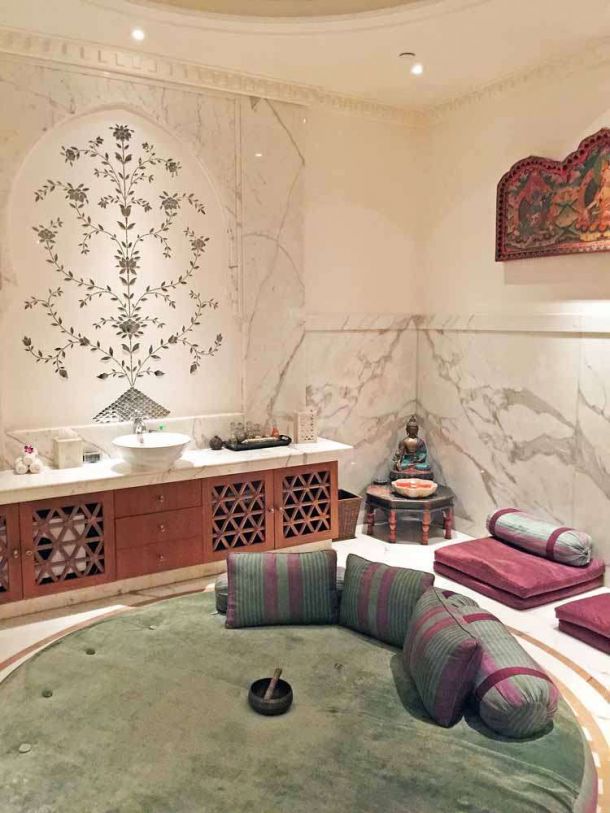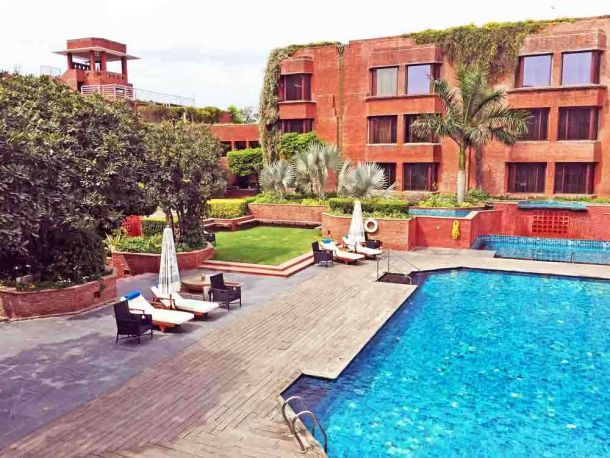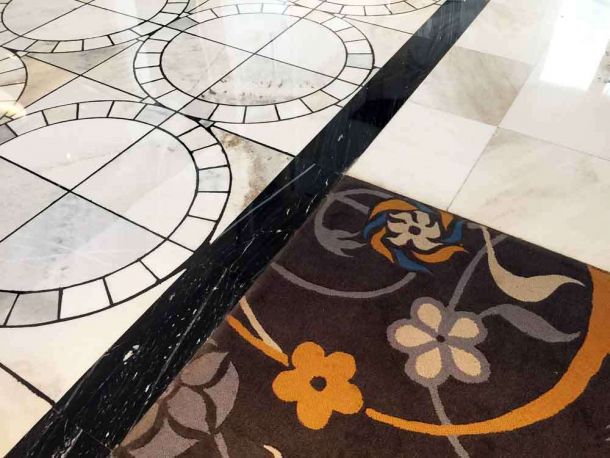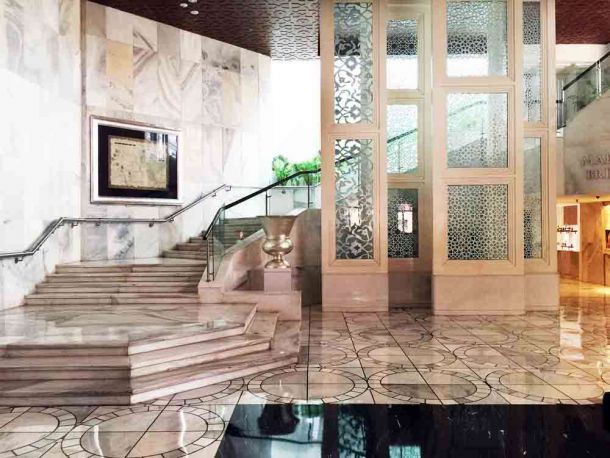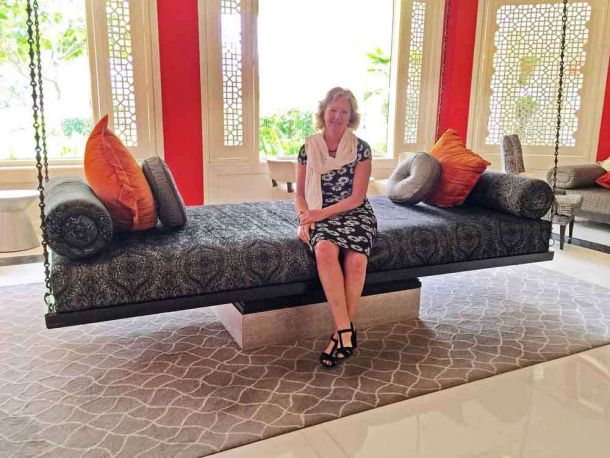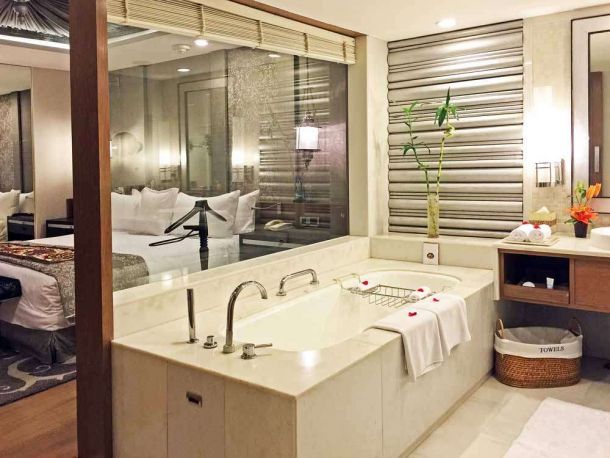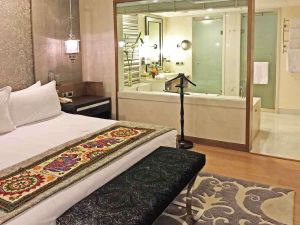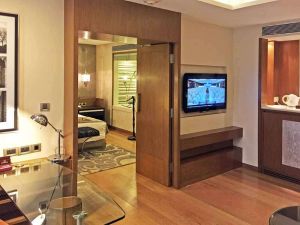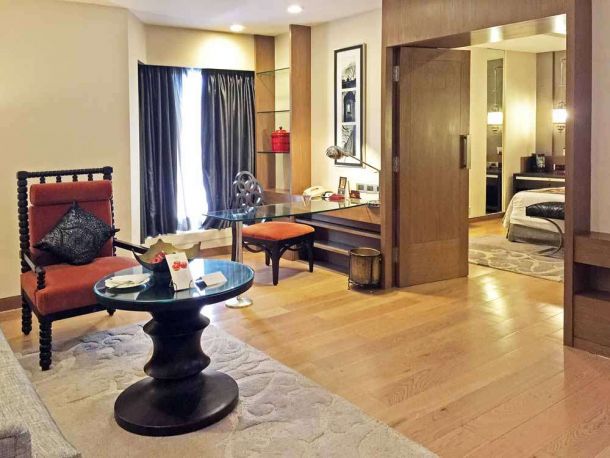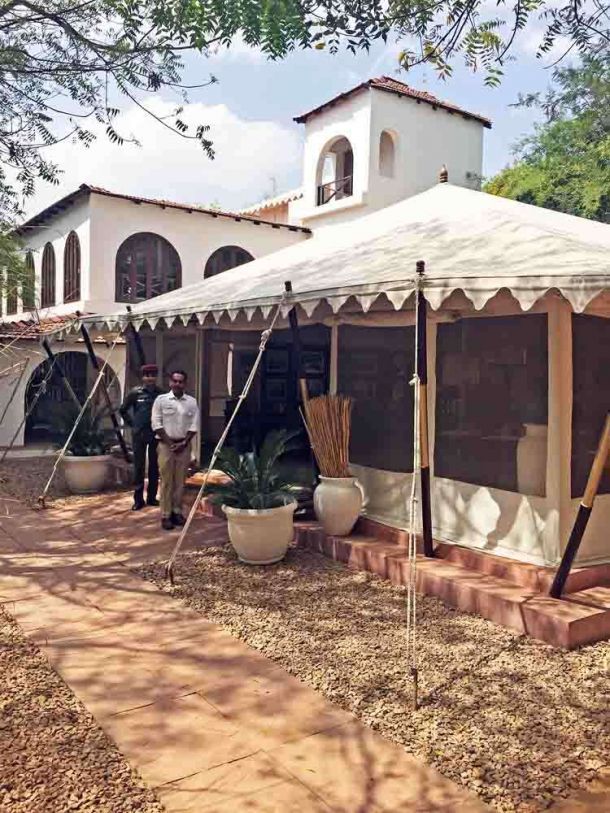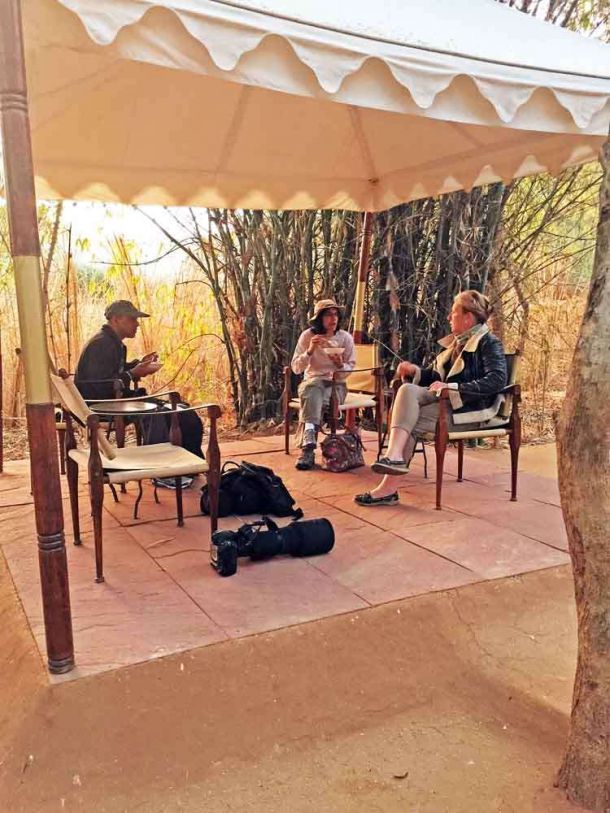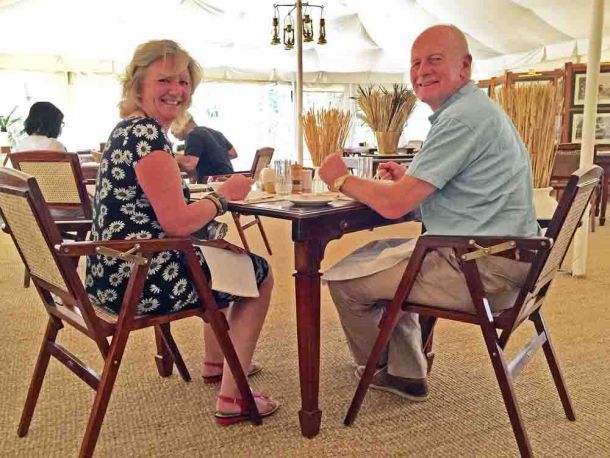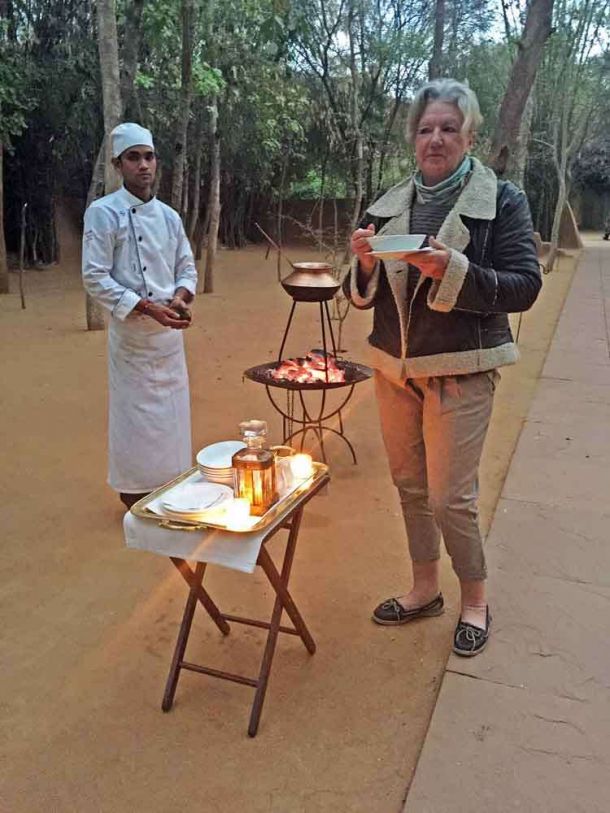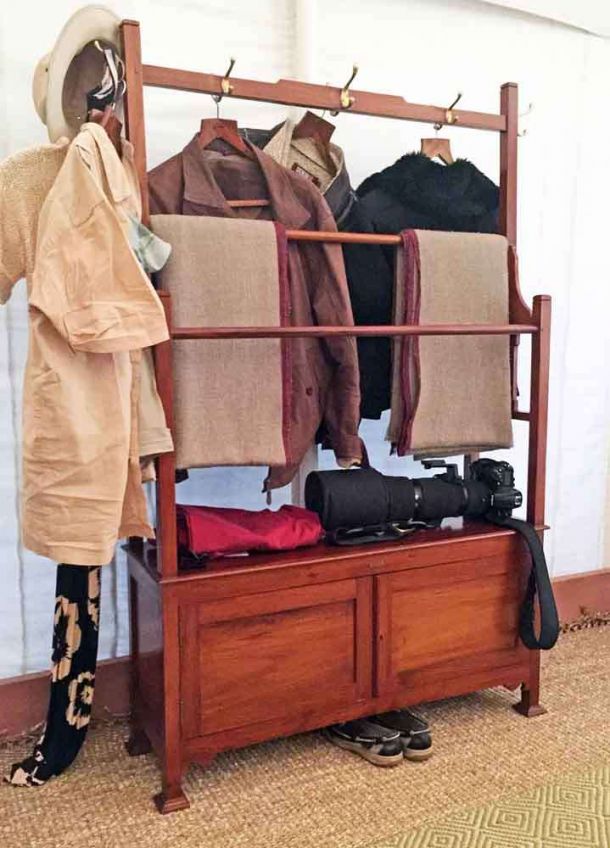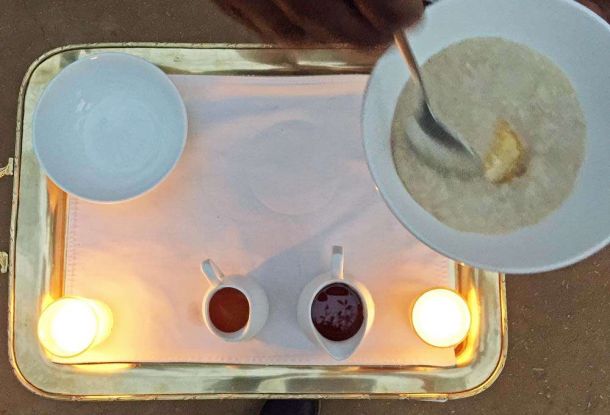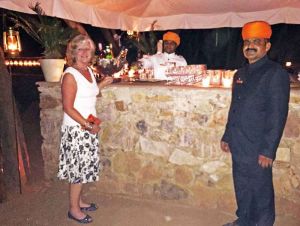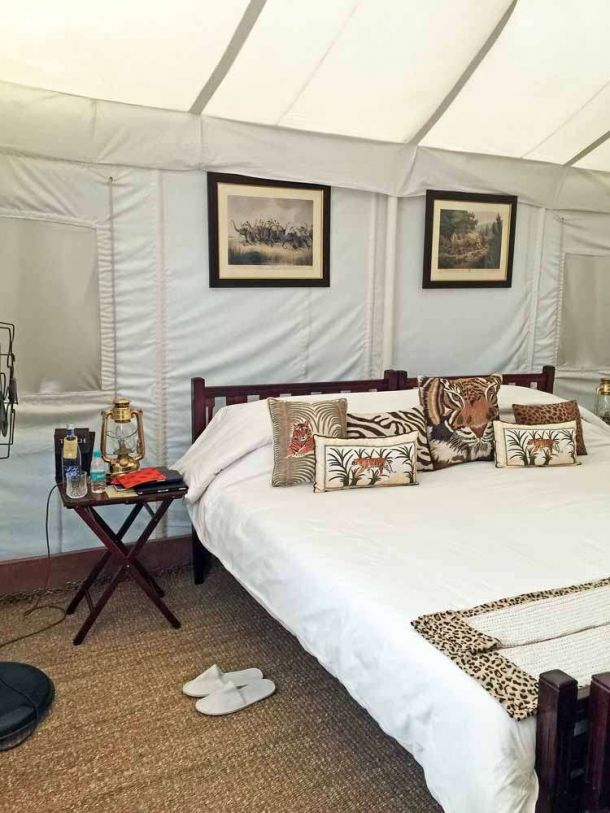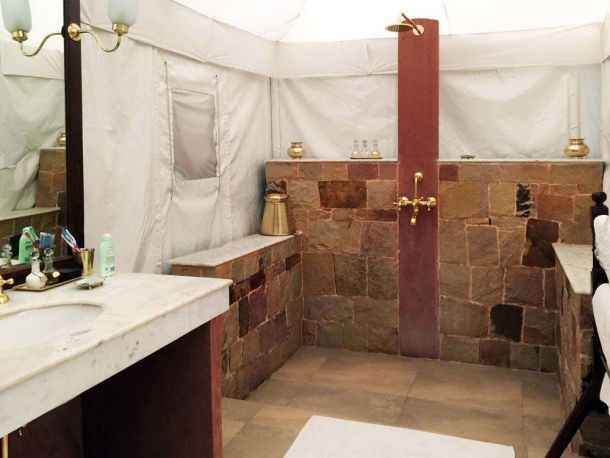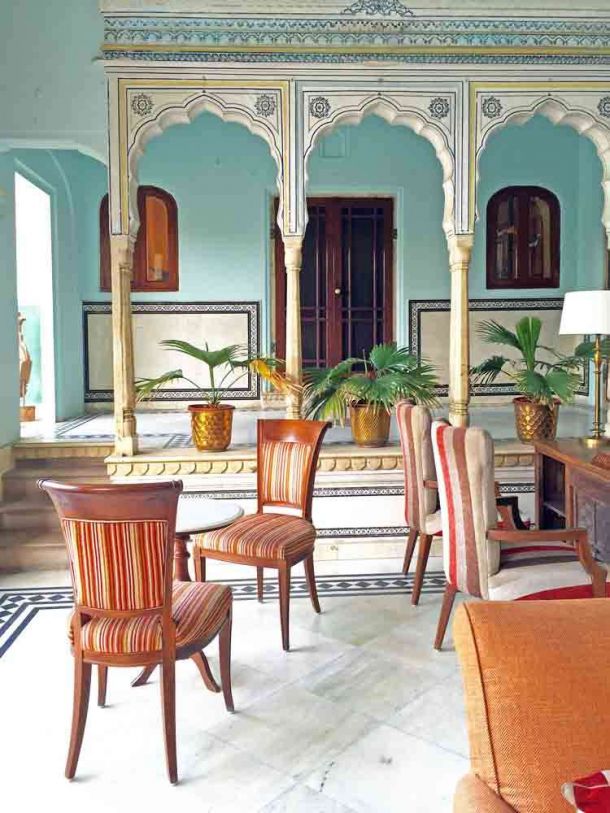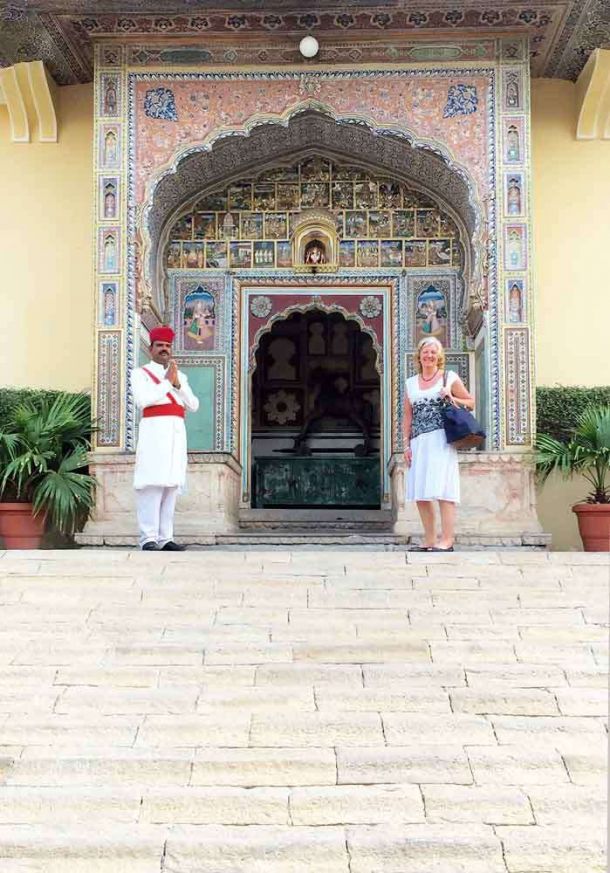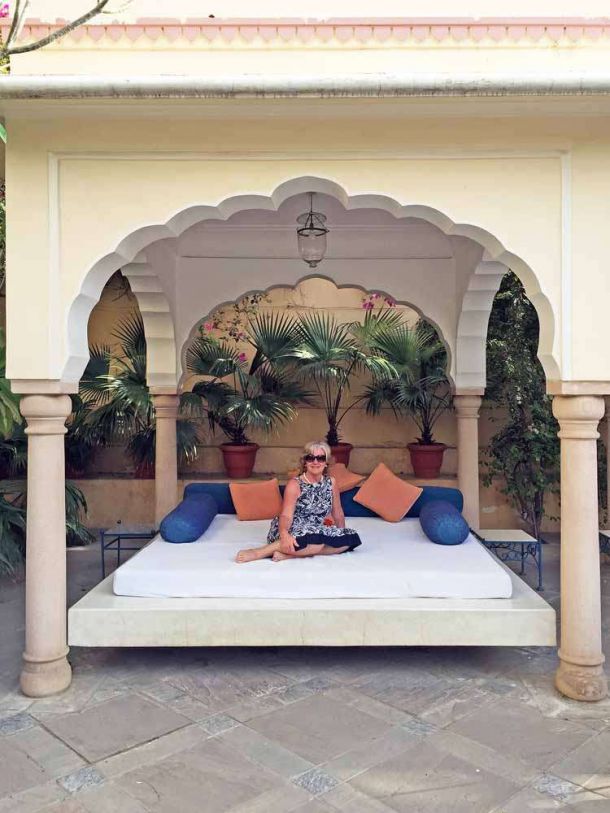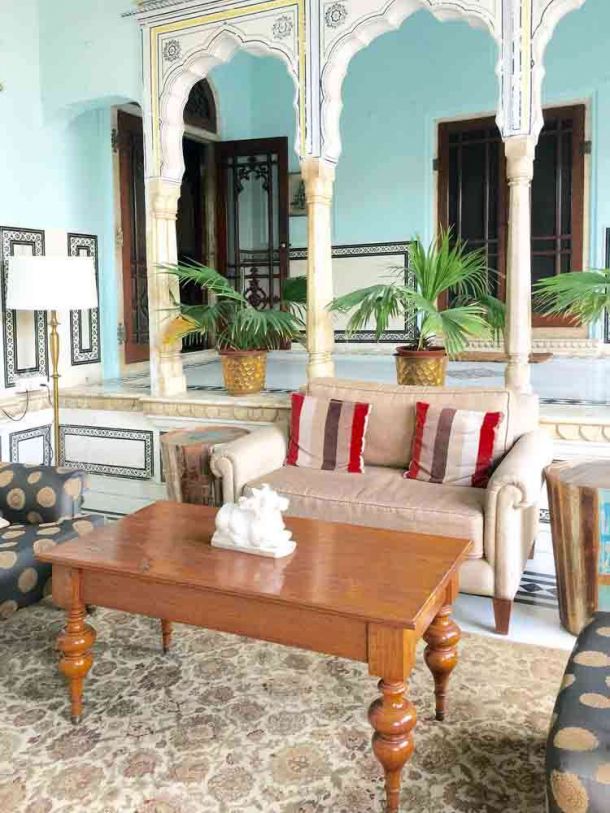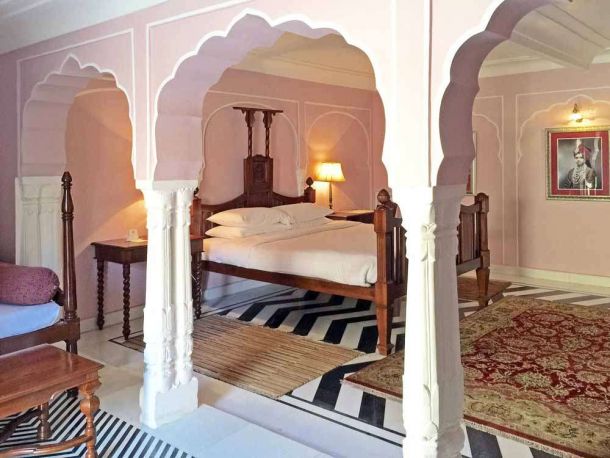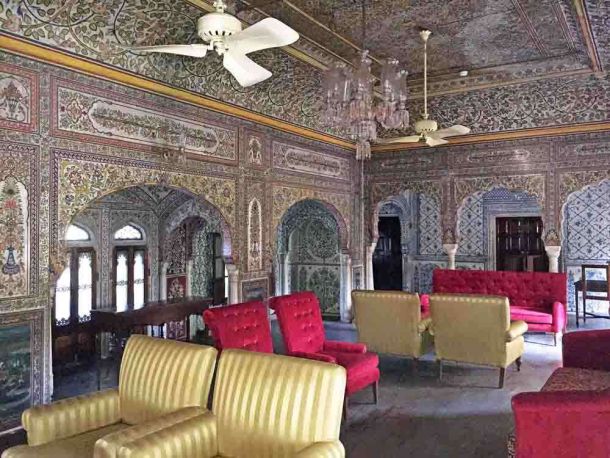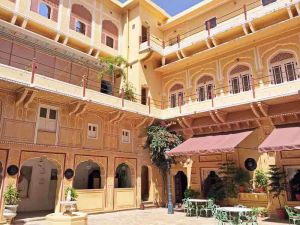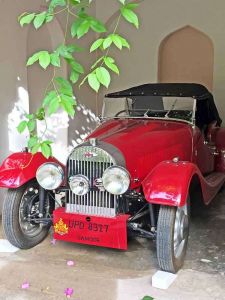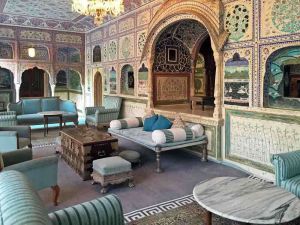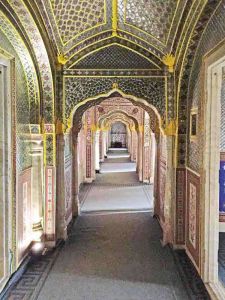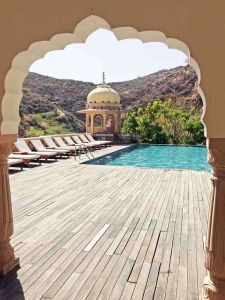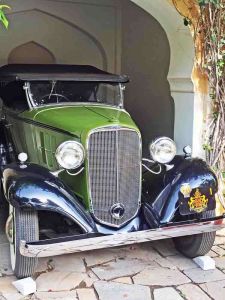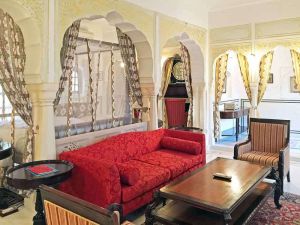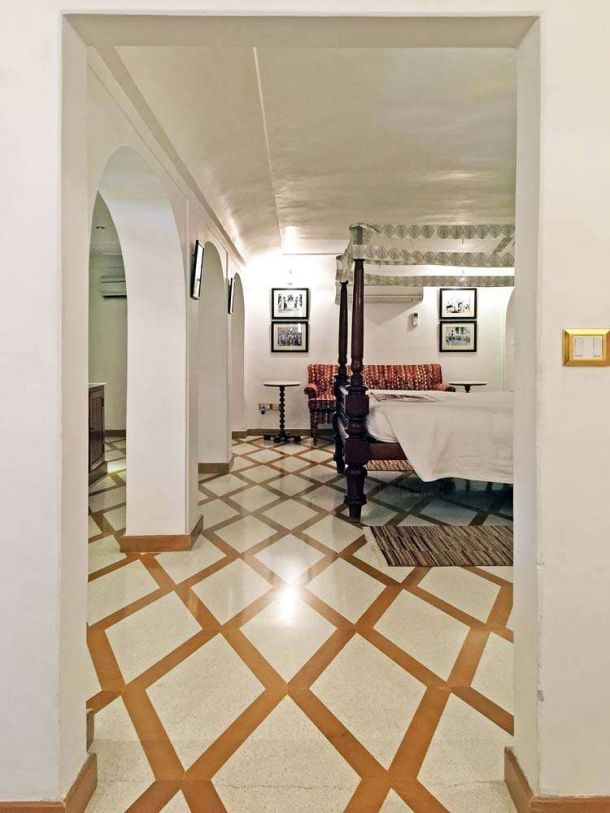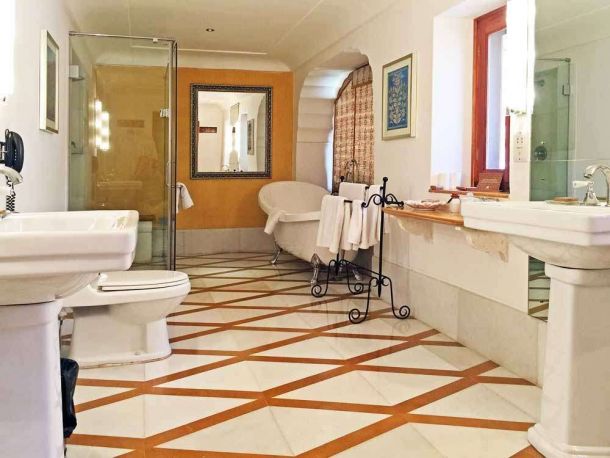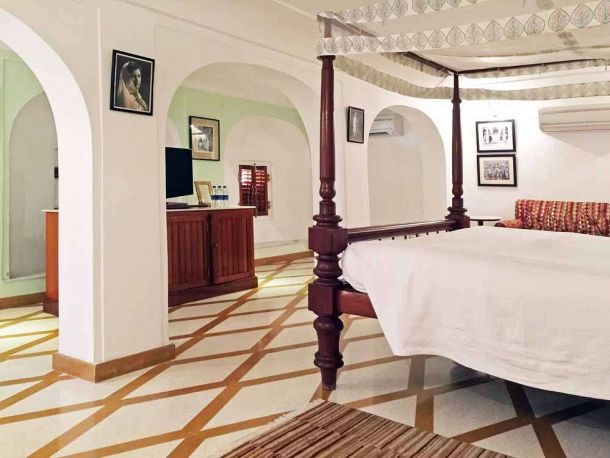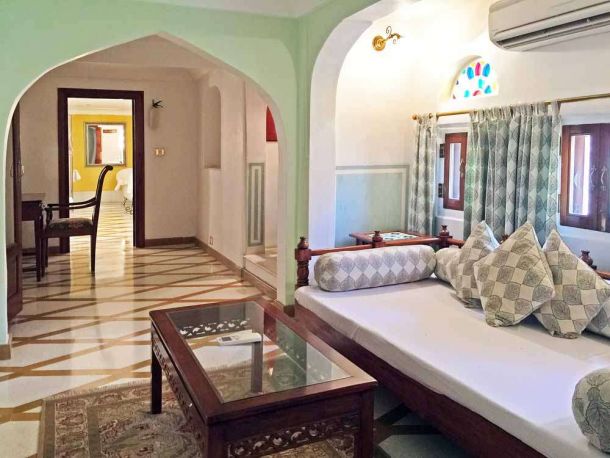The First side of India’s ‘Golden Triangle’ – Hotels
Having lived in India for seven years we’ve never actually investigated what someone who’s never visited might experience on the classic ‘Golden Triangle’ route of Delhi-Agra-Jaipur-Delhi in the space of a ten day tour. Time to put things right.
Here we share our luxury tour with you from three different perspectives, or sides – Hotels, dining and the sights – in three separate posts. All of these elements, nevertheless, especially in country like India should be considered together; to combine seamlessly in order to create an all round experience that contributes to the enjoyment of your journey. Heritage hotels, flavoursome food and fascinating locations should act in harmony, rather than as separate elements, for the very best experiences. In many countries your hotel is simply somewhere to stay while you visit its attractions. In India, many of the hotels are its attractions. Here’s our first post for you to factor into any trip you make to this wonderful country – Hotels.
Hotels
Our choices of luxury accommodation are not based on the size of the hotel, neither its opulence, nor how expensive it is – but as a distillation of character borne out of the architecture and more importantly the staff and management. An extravagantly restored property that owes more to Hollywood film set than its heritage doesn’t impress, whereas a property that demonstrates a sensitive recovery of its heritage whilst retaining a patina of age will often sway our choice. Warmth and respect in staff rather than obsequiousness will often be a defining factor and overall we’re looking to be treated as valued guests rather than transient visitors.
Here’s our roundup of the places we stayed and our reactions to them.
Delhi
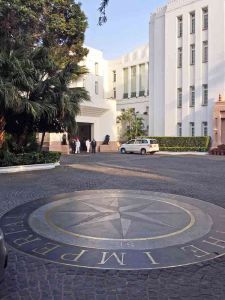 If it’s Delhi it has to be The Imperial! This hotel has long been one of our favourites from the days when it was a haven from the arduous journeys we endured around the sub-continent. The slightly trite “Welcome home” from the ostentatiously uniformed doorman nevertheless hits the spot as we walk through the pillared portico of this outwardly Art Deco building that reveals a host of fine design and colonial echoes within its stylish walls. Opened in 1936, The Imperial has retained its original style and charm, whilst upgrading its facilities in line with modern demands. You can be in no doubt however that you have been welcomed into opulent surroundings that are truly one of a kind in India. This five star hotel is deceptively large but never overwhelms by cleverly imparting a feeling of belonging with extravagant yet intimate spaces.
If it’s Delhi it has to be The Imperial! This hotel has long been one of our favourites from the days when it was a haven from the arduous journeys we endured around the sub-continent. The slightly trite “Welcome home” from the ostentatiously uniformed doorman nevertheless hits the spot as we walk through the pillared portico of this outwardly Art Deco building that reveals a host of fine design and colonial echoes within its stylish walls. Opened in 1936, The Imperial has retained its original style and charm, whilst upgrading its facilities in line with modern demands. You can be in no doubt however that you have been welcomed into opulent surroundings that are truly one of a kind in India. This five star hotel is deceptively large but never overwhelms by cleverly imparting a feeling of belonging with extravagant yet intimate spaces.

We’re shown into our Grand Heritage Suite that has sufficient space between the casual seating area for up to five people, the enormous ‘Hollywood’ bed, spacious wardrobe and en suite bathroom with both marble bath and generous walk in shower for us to utilise; all without feeling in any way cramped. It’s a feature of The Imperial design that the windows are relatively small but this strangely doesn’t transmit to the rooms in terms of restricted light.
If we have a gripe here it’s the chargeable WiFi access – long overdue that this necessity of modern life should be a complimentary service in any hotel- especially as our private car has it as standard. This trivial but irritating fault is the only one we can honestly take The Imperial to task over and we’re otherwise never disappointed on any visit to this wonderful establishment.
The attention to detail is laudable; multinational electric sockets mounted within our desk drawer; complimentary sun tan lotion and little flag to attract service at the poolside; liveried paper covered butter pats at breakfast, scatter rugs over polished wooden floors with period furniture in our room; liveried staff to guide the temporarily lost; significant pieces of historic art on the walls at every turn – a real pleasure to explore.
The recent Spa and Salon development is a fantastic subterranean adventure that is one of the best spas we’ve seen in terms of clever use of space and integration into this heritage property without upsetting it’s sensitive aesthetics – achieving a facility to be proud of.
There’s a temptation never to leave the hotel, such is it’s wonderful seclusion from the rigours of Delhi but it’s in Janpath, a stones throw from Connaught Circus and the lure of the markets and manic life you’ve come to see.
To our mind there is no better an introduction to India than the two night stay that we enjoyed. It’s always a wrench to leave this beautiful ‘home’.
Agra
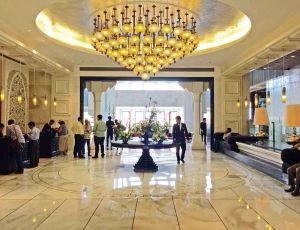 If it wasn’t for the Taj Mahal, we (and presumably millions of others) wouldn’t contemplate ever going to Agra. For us, it’s always been like a dollop of cream in the middle of a cowpat. So, lets’s accept that you’re only going to be there for one night – or two at a push – and then all you’re really looking for is a clean, tidy and comfortable immunisation from the otherwise grim surroundings.
If it wasn’t for the Taj Mahal, we (and presumably millions of others) wouldn’t contemplate ever going to Agra. For us, it’s always been like a dollop of cream in the middle of a cowpat. So, lets’s accept that you’re only going to be there for one night – or two at a push – and then all you’re really looking for is a clean, tidy and comfortable immunisation from the otherwise grim surroundings.
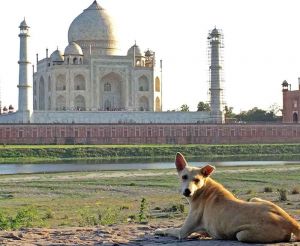
We looked at all the options and eventually opted for the five star ITC Mughal which despite its grand lobby is more akin, with its red brick external architecture, to a set of government offices than an hotel.
There are some nice touches in terms of treatment of individual areas but overall it lacks visual cohesion and we never quite got the impression that we were walking through a single hotel; more a series of stage sets that aren’t related. There’s little to fault the hotel overall but visually it just created an impression that was hard to shake off and therefore failed to inspire.
The suite we stay in however belies its surroundings as the three rooms of our accommodation are separate and distinctive yet follow through to one another naturally; so that you can exist in any one of them without imposing on any activities in another. The trend towards glass walled bathrooms with Venetian blinds adds to the sense of overall space. An additional utility lobby keeps the clutter of travel, such as cases and clothes out of sight.
The suites are a more recent addition and we can only hope that at some stage a single overall design palette is adopted to bind all areas together.
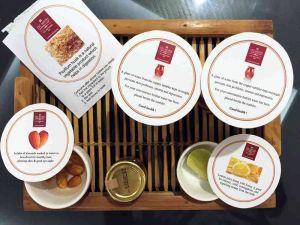
Staff here are competent but not overtly accommodating and once again WiFi is chargeable! We did have a bit of fun with the complimentary potions and herbal remedies to aid sleeping and stress relief – but as we were getting up at 4.45am for the Taj Mahal can’t really authenticate their effects!
We think this is the best of the bunch in terms of high end hotels that provide a comfortable, convenient location for a night or two.
Sawai Madhopur (Ranthambore)
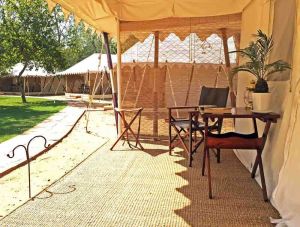 No visit to India would be complete without a foray into the jungles in search of tiger. It’s what took us there many years ago and remains a draw for millions today. We’ve stayed In many jungle lodges over the years and they’ve evolved from rudimentary bamboo and mud huts into often quite offensive lumps of concrete, with many variants in between. Some major on their environmental initiatives whilst others pay scant regard to what it is that enables them to survive.
No visit to India would be complete without a foray into the jungles in search of tiger. It’s what took us there many years ago and remains a draw for millions today. We’ve stayed In many jungle lodges over the years and they’ve evolved from rudimentary bamboo and mud huts into often quite offensive lumps of concrete, with many variants in between. Some major on their environmental initiatives whilst others pay scant regard to what it is that enables them to survive.

We’re particularly conscious of this aspect of tourism and whilst turning up at Sher Bagh might not give the impression that the lodge has any inclination towards conservation; it’s heritage nonetheless lies in the activities of historically one of the most active conservationists in India – Valmik Thapar, or ‘Bhaaloo’ (bear) as he is commonly known.
Privilege in India still carries great weight and its this, when properly focused, that has enabled many of the advances in conservation, tiger in particular, to progress. We believe that its only with people such as Valmik Thapar and other like minded individuals that true change in attitude and practice will come about in the face of huge adversity.
Sher Bagh is the epitome of a luxurious jungle lodge. As a visitor you can be tempted into believing that you’re part of the British ‘Raj’ on tour of inspection in your campaign tent; complete with Victorian brown furniture, staff at beck and call and a bracing porridge breakfast with cognac snifter to kick-start the day.
Fortunately the ‘Thunderbox’ has been replaced with a beautifully appointed bathroom suite as part of your tented bedroom and WiFi is complimentary and accessible in your own tent.
Jaisal, Bhaaloo’s nephew and our gracious host for our couple of days at Sher Bagh does all he can with his staff to make our stay a special one. It’s the one place where we can truly say that our visit is ‘faultless’ and everything combines to make our time at the camp truly memorable. 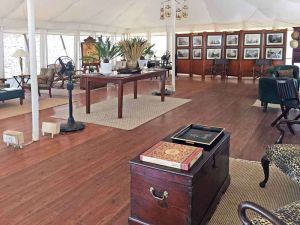 Whether its the early morning wake-up call with tea or coffee, the changing location of dining around the site each evening which helps to acquaint you with the camp, or the chance to relax in the library/lounge tent in the afternoon heat, you become aware that someone has thought this through properly and Sher Bagh becomes very much a valuable contributory part of your overall jungle experience.
Whether its the early morning wake-up call with tea or coffee, the changing location of dining around the site each evening which helps to acquaint you with the camp, or the chance to relax in the library/lounge tent in the afternoon heat, you become aware that someone has thought this through properly and Sher Bagh becomes very much a valuable contributory part of your overall jungle experience.
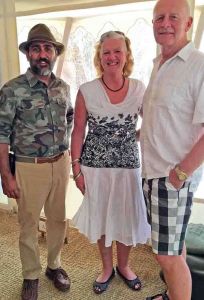
Jaisal’s staff are a credit to him; his manager Sunil Joseph a genuinely accommodating and friendly presence and all other staff a pleasure to interact with.
We have the opportunity to visit other establishments whilst in Ranthambore, from the expensive Aman-i-Khas tented pavilions, the formulaic but impressive Oberoi to the admirably environmentally active Khem Villas but given the choice again would opt for Sher Bagh every time.
Jaipur
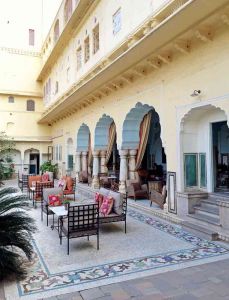 At first glance one can be forgiven for thinking this the Samode Haveli is a hole in the wall of Jaipur’s ancient fortifications, having weaved our way by car through the backstreets of this ancient ‘Pink city’.
At first glance one can be forgiven for thinking this the Samode Haveli is a hole in the wall of Jaipur’s ancient fortifications, having weaved our way by car through the backstreets of this ancient ‘Pink city’.
No sooner have we climbed the steps to the entrance than we enter a tranquil courtyard of elegant Persian arches and secluded areas that erase the memory of our passage through the daily grime outside. We’re staggered by the extent of the Samode Haveli, which is a multi-level, multi courtyard collection of intriguing spaces that is truly captivating in its presentation and finish – and all hidden within what at first glance is a tightly packed city environment.
The hotel, former residence of the King of Samode, covers something like 26 acres but much of this is gardens, cool courtyards, pool and – strange though it may be – a football pitch! Nevertheless, we love this place and although it seems as though we barely take ten paces without stepping up, or down a level, it’s this that separates the areas into easily manageable visual snapshots.
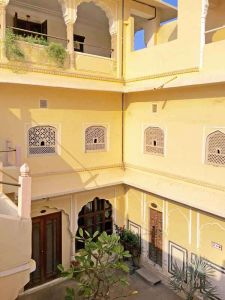
The General Manager, Sudarshan Singh Rawat – “call me Rawat, like Robert” – is the epitome of graciousness and welcome, putting many managers to shame with his warmth and enthusiasm for the Haveli. He escorts us around and explains the running of the property and the huge task that it is to maintain such an historic property in its original form.
Our room is a lovely, pastel grey coloured and Murghal arched space that immediately sets us at ease with its calming presentation. It’s a standard room and although we’re kindly offered an upgrade elect to stay in it, such is its atmosphere and quiet tranquility.
Samode Haveli does show the patina of age but it adds to the ambiance of the overall effect – we actually feel that the King might only have stepped out for a while whilst we enjoy his residence. It’s a pleasure to explore, to enjoy the pool or a quiet sundowner on our own terrace outside our room.
 As we venture out in the day to explore the various ancient sights and sites around the Pink City its with pleasure that we return to the haven that is Samode Haveli. The staff impart a feeling of well being and belonging, enabled no doubt by the relatively small number of 39 rooms to manage.
As we venture out in the day to explore the various ancient sights and sites around the Pink City its with pleasure that we return to the haven that is Samode Haveli. The staff impart a feeling of well being and belonging, enabled no doubt by the relatively small number of 39 rooms to manage.
Full marks to this lovely hotel – and WiFi is free when you hook up to any of their twenty or so options that spring up on your device.
Samode
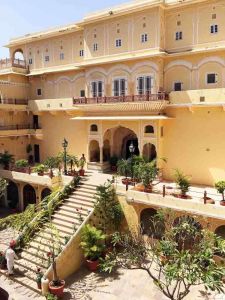 Samode is, at first glance, a transit point towards Delhi from Jaipur.
Samode is, at first glance, a transit point towards Delhi from Jaipur.
Barely an hour and a half’s drive from the ‘Pink City’ many would bypass it in favour of a more prolonged journey back to Delhi.
It would be a mistake in many ways. Samode Palace is there.
Why endure a seven hour journey when it can be broken by a stay in an heritage palace that will leave you wondering how such places exist in India, in the outstanding condition they are today.
Samode Palace is, as the name suggests, part of the royal family of Samode’s heritage collection of properties but has a character and style of its own. It’s apparent from the outset that you’ve arrived at a substantial pile, even though it appears to be in the middle of nowhere. You can’t help but be impressed by your arrival through the towering arches of the entrance gates, the stroll to the imposing staircase, past garages housing vintage cars, or the monumental build of the palace in general.
The palace is vast but once again is divided into manageable spaces by the clever use of individual courtyards and areas that never overwhelm but simply intrigue.
Every nook and cranny, staircase and balcony is festooned with beautifully flowering planters and pots that must be a simply gargantuan task to water on a daily basis given the mid day heat of Rajasthan.
Our room is a lovely deluxe suite but as we take the time to be nosey and look at other rooms in the palace see that there’s little, other than minor amenities, to differentiate between the various standards of accommodation, from basic double upwards, until you get to the Royal suites of which there are four, that benefit from slightly more opulent decor. Even the ‘smallest’ room has ample space and its own balcony, so it’s worth checking out what you want from your room as all are individual.
The two swimming pools, one an infinity pool at the top of the palace overlooking the hills and stepped level of the palace are quiet areas to just chill.

There’s no denying the scale and presence of the palace, it’s just a shame that the service doesn’t quite match up. The palace is open to day trippers and sight-seers, so as we sit having lunch we feel as though we were in a monument cafe; as visitors rather than guests.
The Palace has some stunning hidden gems in the form of ornate royal meeting rooms, mirrored hallways and the Dhabar communal hall which can be viewed by visitors. It’s not until the sun sets and the trippers depart that we feel that we can reclaim the notion that we’re guests here. The staff reflect the scale of this location with its slightly impersonal air, where they know their role but, with minor exception, execute it as duty rather than with any great warmth.
Samode Palace is a must visit location for a night but don’t expect to be feted as an honoured guest – you might just be a tad disappointed.
Delhi (again)
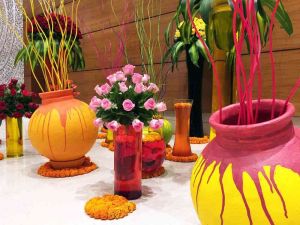 In all too short a time we’re back in Delhi but this time need to be close to the Indira Gandhi airport for an easy transit in the morning for our flight. We’ve booked into the Crowne Plaza, which is a featureless edifice that vies for space in the increasingly burgeoning Gurgaon high rise skyline. It has little to commend it other than its clean, ‘vanilla’ presentation in that it won’t offend but has little to appeal. The staff are friendly and helpful (with the single exception of our check-out duty manager who is an abrupt and humourless girl) and can’t be faulted for its adequacy as a convenient stopover for the airport.
In all too short a time we’re back in Delhi but this time need to be close to the Indira Gandhi airport for an easy transit in the morning for our flight. We’ve booked into the Crowne Plaza, which is a featureless edifice that vies for space in the increasingly burgeoning Gurgaon high rise skyline. It has little to commend it other than its clean, ‘vanilla’ presentation in that it won’t offend but has little to appeal. The staff are friendly and helpful (with the single exception of our check-out duty manager who is an abrupt and humourless girl) and can’t be faulted for its adequacy as a convenient stopover for the airport.
We’d never recommend the Crowne Plaza as a must visit location but for convenience it’s fine. The multi-national breakfast will keep most tastes happy and the coffee is well worth the otherwise mediocre experience. Unless you return to our favourite, The Imperial, and endure the congested roads of New Delhi when you really need to get to the airport, then Crowne Plaza is as good a compromise as any. The most colourful aspect of the hotel is the temporary display of brightly painted pots and decorations for the forthcoming Holi religious festival – which we escape by a day as its an open invitation to smother the unwary from head to toe in coloured powders!
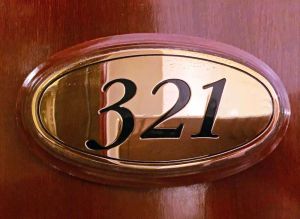 There are countless options for hotels and hostels on your journey around the ‘Golden Triangle’ but we don’t think you’ll go far wrong by following our route and hotels as recommends for a start point. If you chose to extend your stay and venture to other Rajasthan landmarks such as Pushkar, Udaipur or Jodhpur or even east to Varanasi then you’ve a multitude of experiences to add to this journey but as basic taster of what India has to offer then we don’t think you can go wrong with the above as a start point.
There are countless options for hotels and hostels on your journey around the ‘Golden Triangle’ but we don’t think you’ll go far wrong by following our route and hotels as recommends for a start point. If you chose to extend your stay and venture to other Rajasthan landmarks such as Pushkar, Udaipur or Jodhpur or even east to Varanasi then you’ve a multitude of experiences to add to this journey but as basic taster of what India has to offer then we don’t think you can go wrong with the above as a start point.
Do remember that in our opinion the hotels you stay in within India can add immensely to the overall experience and be as remarkable as the locations you visit – which hopefully you’ll also read about in one of our forthcoming posts
Happy triangle travels!

 Let us help plan your own trip around the ‘triangle of India’!
Let us help plan your own trip around the ‘triangle of India’!
Why not download our guide brochure or give us a call today on 01202 030443, or simply click ‘enquire’ to tell us where you’d love to go?
![]()
Follow in our footsteps or make your own tracks.
The itinerary we used can be opened up and printed out with our Golden Triangle Itinerary document (PDF format, requires Adobe Acrobat Reader) to give you a start point to work from.
If you would like more information or help on planning your trip then why not get in touch with us at TLC World to help arrange your own personalised itinerary. We’ve a wealth of knowledge to share and can provide you with example itineraries.
Further reference posts.
You can see other posts on this site that help with packing tips and getting around in India generally by following this link.
As we post the two remaining articles on ‘Dining around the Golden Triangle’ and ‘What to see and do in the Triangle’ we’ll cross reference each post to the other so that you can plan your own tour around this fascinating route.

